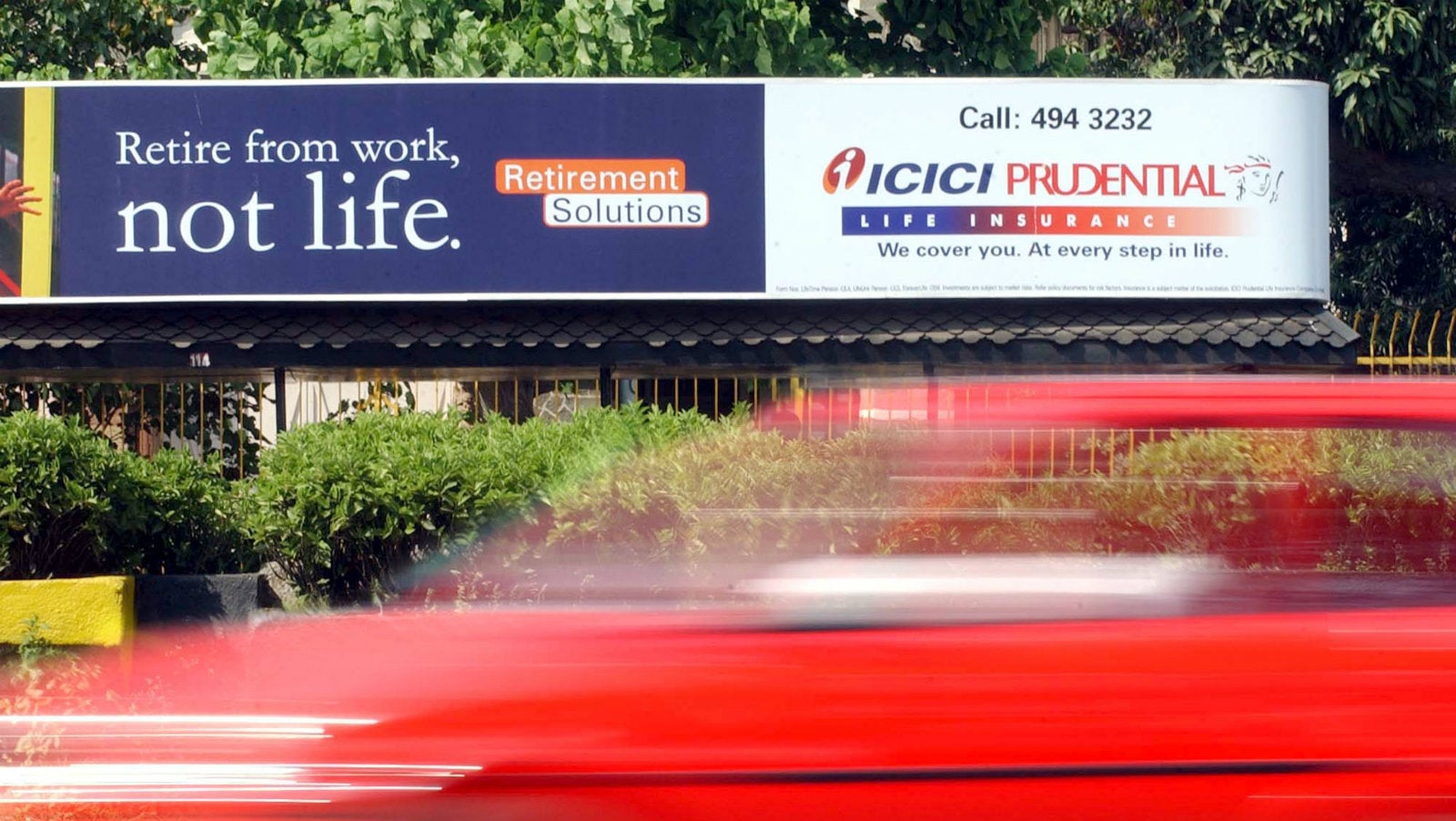ICICI Prudential: India’s biggest IPO in six years shows that its insurance industry is poised for a take-off
The huge success of the first-ever initial public offering (IPO) by an Indian insurance company, which ended on Sept. 21, indicates the opportunity for insurers in a country of 1.3 billion people with growing incomes and financial awareness.


The huge success of the first-ever initial public offering (IPO) by an Indian insurance company, which ended on Sept. 21, indicates the opportunity for insurers in a country of 1.3 billion people with growing incomes and financial awareness.
The public issue of ICICI Prudential Life Insurance—India’s largest private life insurer—was oversubscribed 10.47 times, which means it received 10.47 bids from investors for every share on offer.
The company intended to raise over Rs6,000 crore, making the IPO India’s largest in six years.
The issue comes a little over a month after the merger between HDFC Standard Life Insurance and Max Life, which created India’s biggest insurance firm valued at an estimated $10 billion.
The IPO’s success and the HDFC-Max merger clearly indicate a change in the industry, with firms scrambling to grab segments of the uninsured population.
“India needs insurance cover more than any other country. Hardly anybody has adequate life concert or health insurance in the country. Asset cover is limited only to the corporate sector. And insurance also induces people to save over a long period, creating prosperity and stable retail led money markets” said Joydeep Roy, leader, insurance at PwC India.
“These events such as successful IPOs and mergers aren’t really creating the opportunity, but they are actually recognising the fact that the sector has unlimited potential,” he added.
Insurance penetration
Over 80% of Indians do not have any form of health insurance. The penetration of life insurance (pdf) in the country is a mere 2.7% compared to the global average of 3.5%.
With India’s demography and social indicators changing, the industry is poised to grow, experts say. “Increasing life expectancy, favourable savings, and greater employment in the private sector are expected to fuel demand for insurance and pension plans,” a January report (pdf) by the Associated Chamber of Commerce and Industry of India, a body that represents some 450,000 businesses, said.
Between 2001 and 2016, the total premium paid in the Indian life insurance sector grew at a compounded annual growth rate (CAGR) of 17%, according to the draft red herring prospectus (DRHP) (pdf) filed by ICICI Prudential. By 2020, the industry would touch $400 billion (pdf) from the over $65 billion in 2013, consulting firm KPMG estimates.
What works for ICICI Prudential?
Currently, there is no listed Indian insurer. ICICI Prudential has, thus, given investors an opportunity to try the industry, ensuring an initial thrust for the company’s IPO.
Then there’s the ICICI lineage. The firm is a joint venture between ICICI Bank, India’s largest private bank (by assets) and the UK-based Prudential Corporation Holdings. The company began operations in 2001 and managed Rs1.04 trillion (pdf) worth of assets as of March 2016, making it one of India’s largest fund managers.
Meanwhile, being associated with a large bank helps insurance firms because a large part of the revenue comes from what is called bancassurance, an insurance product sold through a bank. This means ICICI Prudential already has access to ICICI Bank’s large client base: current and potential customers.
In the past few years, the insurer has also focussed on digital or online sales. For instance, in fiscal 2016, 92.3% of ICICI Prudential’s new business applications came through the digital platform, according to the DRHP.
“The company’s operational strategies and focus on digital sales are expected to aid business growth going ahead,” brokerage Centrum Wealth said in a note.
Challenges
Any private insurer in India must face Life Insurance Corporation (LIC), the state-owned behemoth. LIC dominates the life insurance market and currently commands a 52% market share. The remaining 48% is split between 23 private insurers.
Additionally, ICICI Prudential is largely dependent on a few regions in India. This could be a risk, according to a report by brokerage Reliance Securities. It “excessively depends on five geographies—Maharashtra, Gujarat, Karnataka, Tamil Nadu and Delhi—which accounted for more than 55% of the total premium received from new businesses in the 2016 fiscal,” the note added.